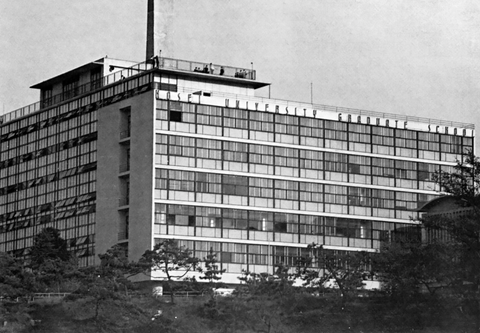 Refrigerator, 1999
Refrigerator, 1999
In psychoanalysis, memory is a two-sided coin, composed of remembering and forgetting. We could add a third side, repression, meaning the never remembered. Freud complained that he couldn’t get an accurate picture with his hysterical patients:
They can, indeed, give the physician plenty of coherent information about this or that period of their lives; but it is sure to be followed by another period as to which their communications run dry, leaving gaps unfilled, and riddles unanswered; and then again will come yet another period which will remain totally obscure and unilluminated by even a single piece of serviceable information.
Photography has changed memory, forming a double to the storehouse of the mind. It is hard to remember anything in the day and age of the personal digital archive, which holds on to everything, as if we had all become hoarders. We keep things in order to more easily forget them, assured that they are tucked away in our basement or in the cloud. But if psychoanalysis is right, this only serves the purposes of resistance, giving repression more mojo.
 Childhood Home I, 2017
Childhood Home I, 2017
Ethridge’s photographs sit at the edge of our current interregnum, displaying objects that feel like something familiar but about to be forgotten. These images are both part of a distinctly Ameri- can identity and something we would like to cast into the ashes of time. Not my childhood. Not anymore. This makes his work a lot like psychoanalysis—symptom and repression are attacked through evoking an assemblage of fantasy, memory, and reality that shakes the frame. Look at the first image (Refrigerator, 1999)! We would never, with our twenty-first-century cold, sleek, stainless-steel appliances, allow such a monstrosity again; that clutter feels so passé, so parental. The photograph speaks to a certain time—that yellow, those greens and burgundies, the salmon pink. A time when memory was memorabilia kept out in the open. There is something so visceral, as if to touch that false bottom in all of us, finding us at our most naïve, understanding nothing. I look at the image and see it with child’s eyes squinting, the sliver of light with its thick tarnished plastic cover, the feel of the suction, the sound of the words “country kitchen,” (cunt-tree-kitten). I must be on 144th street in Kendall, south Florida, behind that mall with waterfalls in the house before the other house they bought. Whoever put mall and fall together like that was a pervert. I have no memory of that first house (Childhood Home I, 2017, Childhood Home II, 2018). Mythology has it that the fridge belongs to Roe Ethridge’s mother (Mom and Me, 2021), so present in this book with her metonymic counterparts (Gisele Self Service Cover, 2013). Supposedly it was once used in a magazine story that never ran, and then again for an advertisement that replaced all the objects taped to the doors with their product logo, and, finally, in an art show. The bell has been sounded three times. Did you know they made an ad that was a joke about hysterical women that said “she has a frigid air”?
 Sacrifice your Body, 2013
Sacrifice your Body, 2013
Ethridge says the form of this book is a fugue. Not merely the temporality of the contents—which run contrapuntally in two directions, ’99–’22 and ’22–’99—but the feeling of it, the state of mind. A continual repression with regard to his own work, like visiting alien territory; a snow globe shaken and only beginning to settle. He has even remarked on the inability to pronounce this strange word—fugue—as if he always wants to say “few-goo-e.” Once upon a time fugue was called both psychogenic fugue and hysterical fugue, while another counterpart would be shell shock. The medical and the musical share an etymology going back to the Latin fugere, “to flee,” and fugare, “to put to flight.” In a musical fugue each voice or musical material enters separately and thematic material is passed from one to another, one chasing the other, as they become more and more interwoven. The medical term indicates a kind of suffering from amnesia, identity crisis, shock. A fugue often took the form of a flight from one’s identity; it could involve travel to some unconsciously desired locality during which all awareness of personal identity is lost, though one may appear rational all the while. On recovery, memory of events during the fugue are repressed and symptoms begin to manifest—in particular conversion symptoms or forms of bodily protest.
 Linda Anderson (Haunted House)
Linda Anderson (Haunted House)
Many fuguers were men and some thought of the psychogenic fugue as the body language of male powerlessness; a counterpart to the somatic symptoms, like psychogenic paralyses, blindness, muteness, epilepsy, or the alien pains of female hysteria. The male fuguers were the more sensitive—often defecting soldiers or artisans or failed sportsmen. Lost, they prophesy how a post-war, post-industrial world would create more and more fragile psyches. The hysterical fugue folds back around itself: symptoms and forgotten memories take on the fugal quality of two superimposed images, two interlocked time referents, like childhood violence and the adult experience of war in a kind of call and response, a composition close to Ethridge’s light box images of magazines pages (Linda Anderson (Haunted House), 2004). Does Ethridge want to tell us something about the American psyche? Sacrifice your body, he says (Sacrifice your Body, 2013), it’s the American spirit (American Spirit and Roses, 2016–2017).
Hysterical fugue is a term no longer used.
Neither is refrigerator mother.
Excerpt from Jamieson Webster’s essay ‘American Polychronic Hysteria’ in AMERICAN POLYCHRONIC by Roe Ethridge (2022)

Embossed paperback with folded jacket
25 x 27.5 cm, 480 pages
€63 £50 $70
The signed edition includes a slip signed by the artist and glued into the inside back cover.





